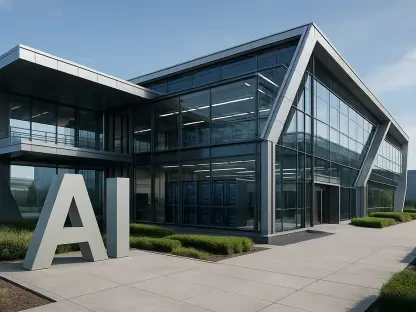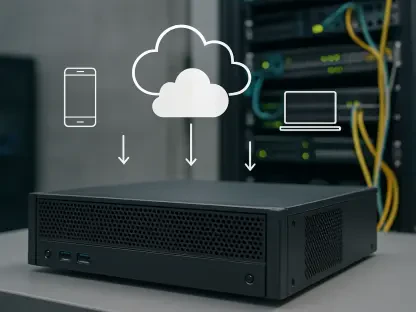In today’s rapidly evolving digital landscape, the networking industry is undergoing a seismic shift driven by the powerful forces of automation and programmability, which are fundamentally changing how organizations design, deploy, and manage their connectivity infrastructures. As businesses strive to keep pace with increasing demands for speed, scalability, and adaptability, these technologies are becoming essential tools to transform static, labor-intensive networks into dynamic, agile systems. This exploration, marking the culmination of a comprehensive series on network evolution, delves into the profound impact of code-driven approaches and automated workflows. Far from being mere technical upgrades, these advancements represent a complete reimagining of network operations, aligning them with broader IT paradigms such as cloud computing and DevOps. The promise of enhanced efficiency, reduced human error, and the ability to swiftly respond to business needs positions automation and programmability as the foundation of future-ready networking.
Driving Agility with Automated Systems
The relentless push for agility stands as a central motivator behind the adoption of automation in networking. Businesses across industries face mounting pressure to adapt to market fluctuations and customer expectations at an unprecedented pace, and manual network management often falls short in delivering the required responsiveness. Automation steps in as a game-changer, enabling IT teams to streamline repetitive tasks like configuration and troubleshooting. This liberation from mundane workloads allows professionals to pivot toward strategic initiatives that drive innovation and align network capabilities with overarching business objectives. By automating critical processes, organizations can scale operations seamlessly, ensuring that their infrastructure supports growth without becoming a bottleneck. The result is a network environment that not only keeps up with change but anticipates it, positioning companies to thrive in competitive landscapes where speed is a decisive advantage.
Another dimension of this agility emerges through the integration of sophisticated tools that reduce downtime and enhance reliability. Automation empowers systems to detect anomalies and initiate corrective actions without human intervention, significantly minimizing the risk of costly disruptions. This capability is particularly vital in environments where even brief outages can lead to substantial financial or reputational damage. Moreover, automated deployments ensure consistency across complex, distributed networks, eliminating the variability that often accompanies manual configurations. Industry insights suggest that organizations leveraging these technologies can achieve deployment cycles that are orders of magnitude faster than traditional methods. As a result, the focus shifts from merely maintaining network stability to proactively enhancing performance, enabling businesses to capitalize on emerging opportunities with confidence and precision.
Infrastructure as Code Redefines Networking
Infrastructure as Code (IaC) is rapidly gaining ground as a cornerstone of modern networking, borrowing principles from cloud computing to revolutionize how network environments are provisioned and managed. By defining network configurations through software scripts rather than manual inputs, IaC minimizes human error and accelerates the deployment of resources. This approach, while well-established in cloud contexts, is still maturing within networking domains, where adoption often centers on specific use cases like initial setup or compliance checks. The potential, however, is immense—IaC enables organizations to treat their network infrastructure with the same rigor and repeatability as application development, fostering consistency across diverse environments. As more teams recognize these benefits, the trajectory points toward broader implementation, promising a future where entire network lifecycles are managed through code.
Beyond its technical advantages, IaC also facilitates collaboration between traditionally siloed teams, such as networking and development. By using shared tools and version control systems, cross-functional groups can work together on network configurations, ensuring alignment with application requirements and business goals. This collaborative model mirrors DevOps practices, breaking down barriers and fostering a culture of shared responsibility. Additionally, IaC supports rapid iteration, allowing organizations to test and refine network setups in controlled environments before full deployment. Such capabilities are critical in today’s multi-cloud and hybrid setups, where complexity can easily spiral into inefficiency. As adoption grows, the emphasis will likely shift toward integrating IaC into continuous operations, ensuring that networks remain adaptable and resilient amid constant technological evolution.
Observability Evolves into Intelligence
As automation reshapes networking, the role of observability is undergoing a significant transformation, moving far beyond traditional monitoring to deliver actionable intelligence. In the past, network visibility was limited to basic status reports, often leaving teams overwhelmed by raw data with little guidance on how to act. Modern observability tools, however, are designed to provide predictive insights and suggest automated remediation, enabling proactive management of potential issues before they impact operations. Real-time telemetry plays a pivotal role here, offering a granular view of network performance that validates automated changes and ensures stability. Standardized data formats like YANG and OpenTelemetry are also becoming indispensable, helping to structure the vast streams of information into meaningful, actionable outputs that drive smarter decision-making.
This evolution from data to decisions marks a critical shift in how network health is assessed and maintained. Industry thought leaders stress that observability must now offer practical recommendations, such as security scorecards or specific fixes, rather than merely presenting metrics. This advisory capability empowers teams to address vulnerabilities swiftly and maintain robust network environments, even as complexity grows with multi-cloud architectures. Furthermore, the integration of machine learning into observability platforms enhances their ability to anticipate trends and identify patterns that human operators might overlook. Such advancements ensure that automation is not a blind process but one guided by deep, contextual understanding, ultimately fostering trust in these systems and enabling organizations to operate at the speed of digital transformation.
Transforming Skills for a Programmable Era
The rise of programmable networks necessitates a profound cultural shift within the networking community, particularly in the skill sets required for network operations (NetOps). Traditional engineers, long reliant on manual configurations via command-line interfaces, are now urged to embrace coding languages like Python and tools such as Ansible and Terraform. This transition aligns networking with broader IT trends like DevOps, where practices such as CI/CD pipelines are becoming standard for managing infrastructure. The demand for these skills reflects a broader recognition that modern networks are software-driven entities requiring a blend of technical proficiency and workflow-oriented thinking. As a result, the role of the network engineer is expanding to include responsibilities traditionally associated with developers, marking a significant evolution in professional expectations.
Resistance to this change, often fueled by concerns over losing control or triggering costly errors, remains a notable barrier. However, the consensus among industry experts is that upskilling is not merely beneficial but essential for staying relevant in a rapidly changing field. Educational programs and certifications are adapting to this reality, increasingly emphasizing automation, cloud integration, and programming over rote memorization of commands. This shift encourages professionals to focus on designing adaptive, intelligent networks that can evolve with business needs. By fostering a mindset of continuous learning and collaboration, organizations can help ease this transition, ensuring that their teams are equipped to handle the complexities of programmable environments while mitigating risks through strategic safeguards like testing and rollback mechanisms.
Navigating Standards and Vendor Dynamics
One of the most pressing challenges in the era of programmable networking is striking a balance between open standards and vendor-specific ecosystems. Open standards offer the promise of flexibility, particularly in hybrid and multi-cloud environments where interoperability is crucial for seamless operations. Conversely, vendors often prioritize proprietary innovations to differentiate their offerings, which can lead to lock-in and fragmented automation efforts. This tension creates a complex landscape where organizations must weigh the simplicity of integrated vendor solutions against the long-term benefits of adaptable, standards-based approaches. Tools like Terraform are emerging as potential bridges, providing abstraction layers that enable compatibility across diverse platforms while minimizing dependency on any single provider.
The implications of this dynamic are far-reaching, as inconsistent tools and policies across cloud providers can undermine the efficiency gains promised by automation. Industry perspectives highlight the need for a dual trajectory where customer demand for open standards coexists with vendor-driven advancements, fostering an ecosystem that supports both innovation and choice. Achieving this balance requires careful planning, with organizations encouraged to prioritize solutions that offer portability and avoid overly restrictive commitments. As the field progresses, the push for standardized protocols and data formats will likely intensify, driven by the need to manage complexity without sacrificing agility. Addressing these challenges head-on will be critical for ensuring that programmable networks deliver on their full potential across diverse operational contexts.
Charting the Path Forward
Reflecting on the transformative journey of networking, it becomes evident that automation and programmability have reshaped the field into a dynamic, software-defined domain. These technologies have proven instrumental in aligning network operations with the urgent demands of business agility, offering solutions that transcend the limitations of manual processes. Through practices like Infrastructure as Code, the evolution of observability into intelligent guidance, and the upskilling of NetOps professionals, a robust foundation has been laid for resilient, adaptable infrastructures. Even challenges such as balancing open standards with vendor ecosystems have sparked innovative strategies that pave the way for interoperability. Looking ahead, organizations are encouraged to invest in scalable automation tools and foster continuous learning among teams to stay competitive. Prioritizing standardized frameworks and strategic risk mitigation will further solidify the gains achieved, ensuring that networks remain agile and future-ready in an ever-evolving digital landscape.









